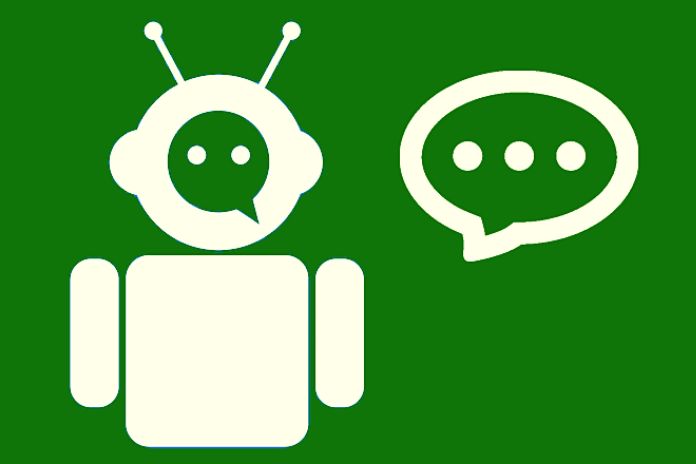Cognitive Chatbot: So you certainly know how important it is for the company to provide the best possible customer experience. There are new technologies that can help (a lot) to increase the quality level of service.
As is the case with the cognitive chatbot, Not sure how this technology works or how it can help? No panic! This post explains everything you need to know about this new chatbot!
The Biggest Challenges In Customer Service
To improve a customer’s experience, the company must observe their purchase journey in depth, from when they became interested in the product to the post-sales period.
Generally, experiences categorized as evil occur in digital environments. After all, there is no human contact, and the service is not performed as the customer expects.
Let’s go to an example. A user came to your company’s website to purchase a specific item. During navigation, this customer may encounter the following situations:
- Delay in loading pages;
- Lack of details about the product;
- Absence of explanation to direct the customer;
- Corrupted pages.
Situations like these usually generate a negative experience and can even prevent the customer from purchasing the item.
In the age of technology, consumers expect more transparency, agility, and quality from companies. Especially when it comes to customer service, any business that cannot provide a good experience can be immediately dropped and replaced by a competitor.
The use of chatbots can be a strong ally, as it is an intuitive tool that is always accessible to the public and can help the customer clarify any doubt.
Chatbot In Practice
The chatbot is nothing more than a digital technology based on a robot that simulates human interaction. These tools are usually accompanied by complementary technologies, such as artificial intelligence (AI), responsible for “giving life” to the chatbot.
In the beginning, the interaction with a chatbot was quite plastered (and robotic), where the message options sent to users were limited to: “if you want option A, press 1; if you want option B, press 2“.
This was undoubtedly a big step in care automation, given the historical context. But with the advancement of technology, it was apparent that sooner or later, this would change. And so it was done since, currently, modern chatbots have more humanized functions.
The Evolution Of Bots: Cognitive Chatbots
You might think that cognitive chatbots are set in a futuristic context or something like that. However, it doesn’t go that far. It is just the closest result of autonomous artificial intelligence.
Chatbots are robots that can capture customer signals during a conversation, whether written or spoken. And that depends on technologies such as artificial intelligence and machine learning to become increasingly intelligent.
The point is that, in the case of cognitive chatbots, these robots are capable of going further. That is, they can interpret feelings through writing and (or) voice and help users in decision-making and solving complex problems.
The Five Biggest Differentiators Of The Cognitive Chatbot
Below, see the five differentials of a cognitive chatbot and how this tool can help transform the customer experience.
1- Better Decision-Making In Customer Service
How often does a human operator need to change the direction of a conversation to get on the “frequency” of the customer? Naturally, these professionals must adopt persuasive speeches to generate proximity and strengthen relationships. With the standard chatbot, achieving this is virtually impossible.
However, a cognitive chatbot will be able to perform this task efficiently. After all, emotional interpretation will allow the cognitive chatbot to relate more naturally, sending messages to the right person at the right time.
2- Friendly Contact
Mechanized and repetitive services convey a sense of carelessness to the listener. And here, one fact needs to be clarified: no customer is motivated when they are not heard!
Being heard and welcomed is a human characteristic. Still, as the cognitive chatbot has, in its essence, the ability to understand the customer’s emotions, the tool will be able to offer the correct answer at the right time and thus improve the experience.
3- Intelligence As A Service
Artificial intelligence, combined with machine learning, gives cognitive chatbots the remarkable ability to “learn to learn.”
This feature allows these technologies to improve as they interact with customers. Each new information exchanged is new data that will be incorporated into the tool’s database. So, the trend is for the customer to start dealing with a technology that knows more and more about him.
4- Faster Resolutions
When you have a robust database that is constantly learning, the response time for the customer becomes much faster with personalized information and assertive answers, and the greater the success in service.
It is worth noting that one of the differentials of a cognitive chatbot is that it goes beyond availability. Technology is also essential in sending reminders and other updates beyond answering questions. For example, they anticipate an action, such as an invoice due date.
5- Omnichannel Experience
Responsive and multi-channel tools are the new market trend, and this is already a reality for cognitive chatbots. Everyone can use the chatbot on desktops for web access and (or) mobile devices with applications. This integration will give users a unique experience, regardless of the chosen device.
Also Read: Cybersecurity: 9 Tips To Keep Your Business Well Promoted

